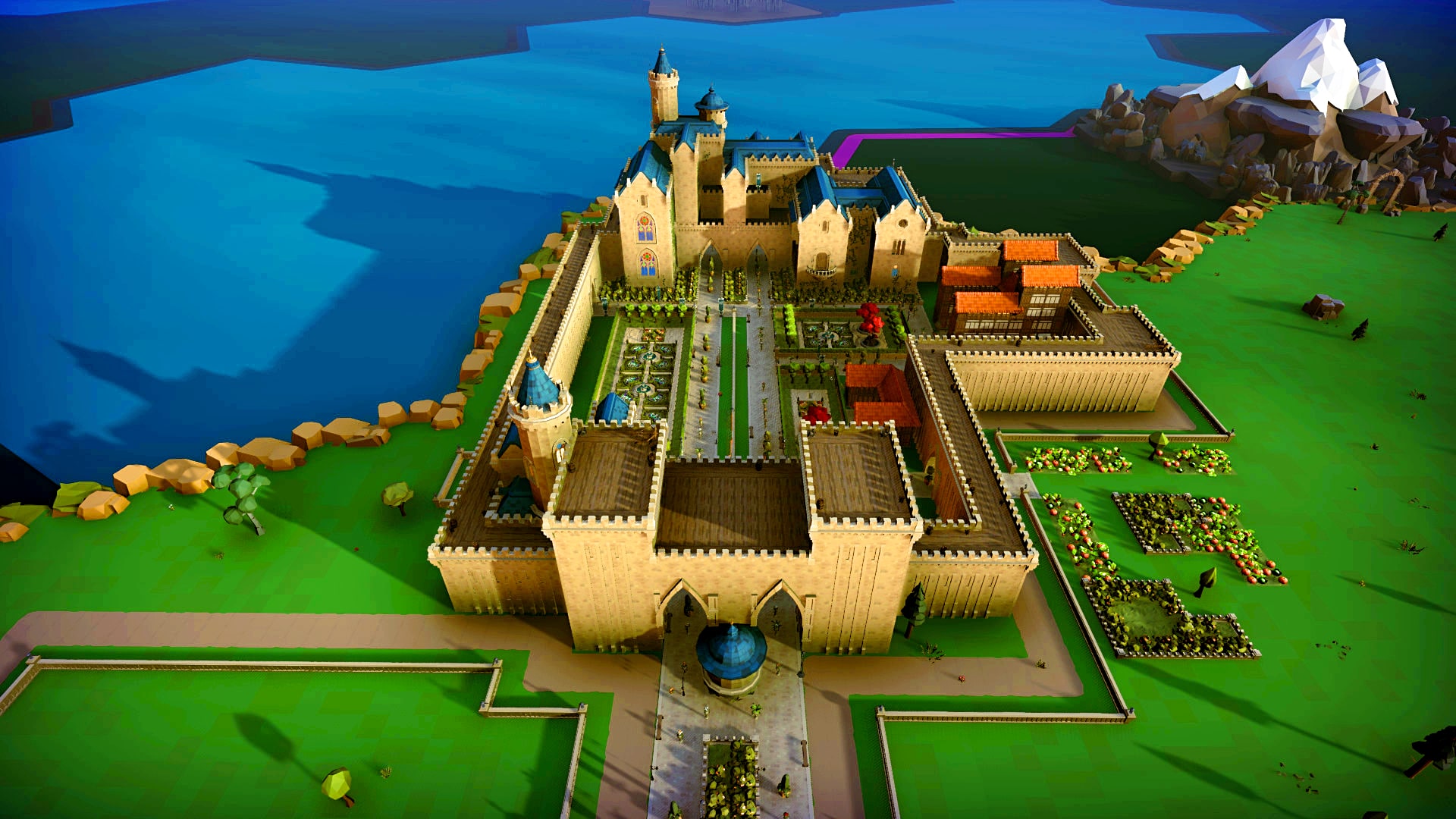Only two people are currently developing a building game that makes wonderful castles possible. We have played exclusively in Spirit & Stone and talked to both developers.
The concept behind Stronghold remains brilliant to this day. For some it may be a fabulous real-time strategy game, but I love Stronghold above all as a building game. A medieval castle as a self-contained microcosm with its own laws, occupations and inhabitants offers so many exciting building options that you can sink into it for hours even without any siege battles.
It”s just a shame that no game has been able to completely recapture this fascination for years. Not even Stronghold itself. Of course, the Middle Ages remain a popular setting and, for example, Manor Lords feels a bit like a modern Stronghold even without any castles. But when it comes to castle building, video games have been treading water for years.
Maybe not for long, though. Maurice recently drew my attention to a new building game called Spirit & Stone. And now you can guess why! Did you guess? You are right! Or read the headline. But Spirit & Stone already shows in its trailers what virtual castle building will look like in 2022. Take a look for yourself:
The dynamic construction of these castles along with surrounding villages fascinated me immediately, to say the least. So much so that I absolutely wanted to contact the developer studio Garden Gate Interactive. Here it turned out that Spirit & Stone is supervised by just two developers, but they pour all their passion into the project.
I talked to them and played a very early version of Spirit & Stone. My impression: this building game could show the way for the whole genre!
Table of Contents
Want to stay informed about Spirit & Stone?
Spirit & Stone is being developed by a very small team that is funding this project independently. If you would like to support the development, they would be very happy if you follow the project on various channels?
The new trend in building strategy
Those who are passionate about building games may have noticed a new trend in recent years: Building games are currently tending more towards relaxation and creativity again It may still be a small, barely perceptible movement – but it is definitely discernible. It”s all about games that rarely have a goal or require management. Instead, the focus is simply on leisurely building.
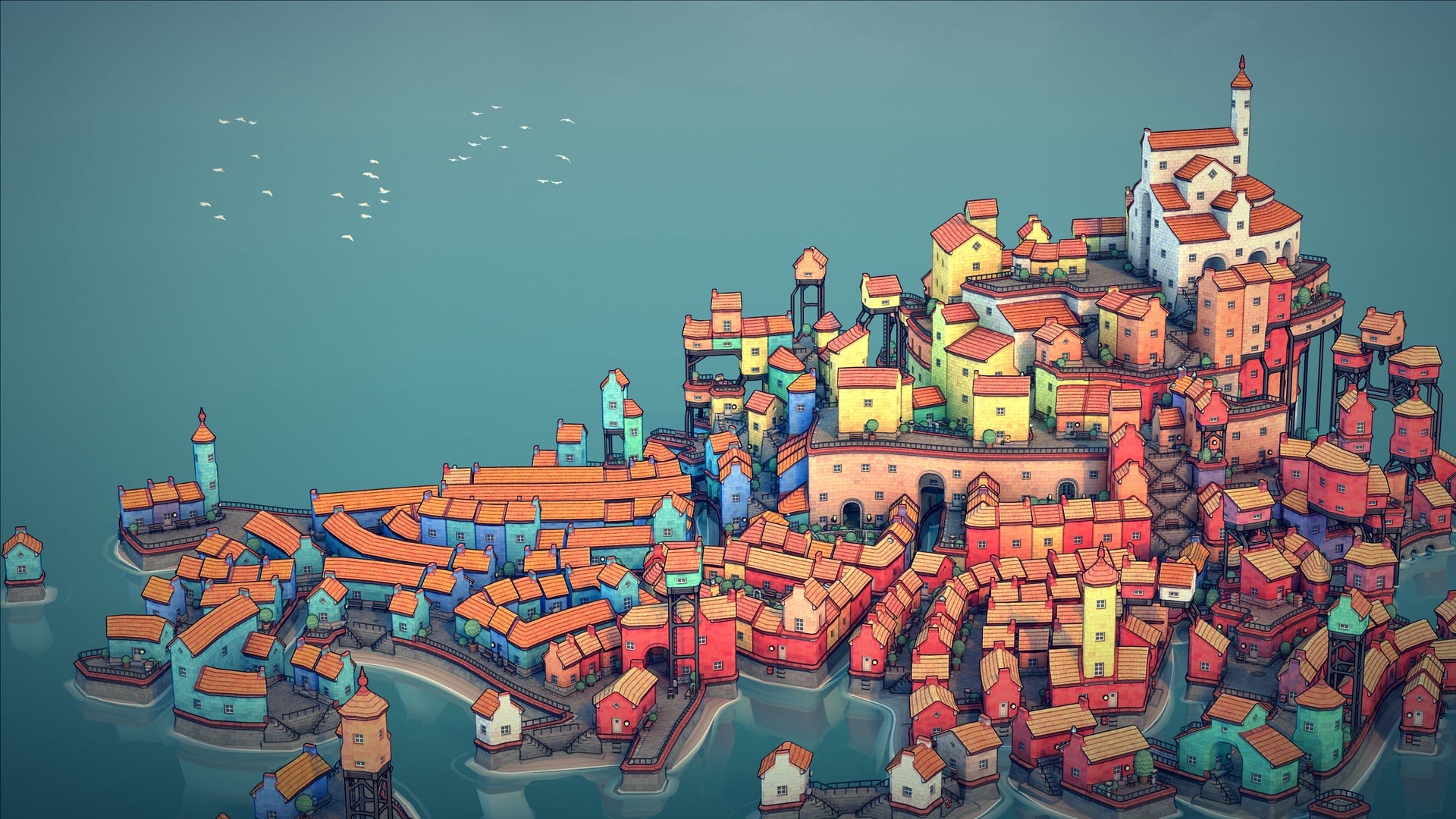
This kind of building trend was kicked off by Townscaper. A game in which you create sometimes breathtakingly beautiful island cities using only a colour palette. The fascination here comes more from seeing how the placement of structures independently creates new buildings. Procedurally, completely different cities with their own charm emerge again and again. This is motivating, even without managing resources or chains of goods. The very successful Dorfromantik also relies more on a lovely atmosphere than a hard-hitting simulation, and most recently I was able to get excited about a still nameless construction game with overgrown ruins that works similarly to Townscaper!
Townscaper in the Middle Ages?
Spirit & Stone basically feels like a cross between Minecraft and Townscaper. As the ruler of a small piece of land, I am completely free to decide what I want to build there. But while in other building games I build predetermined houses or shops, in Spirit & Stone I can put everything together from a number of blocks.
Think back to your early childhood. If at any time you sat on the floor alone or with friends to put together buildings from Lego bricks, then you will well understand the fascination behind Spirit & Stone. It was precisely this feeling that inspired the two developers to create their creative building game.
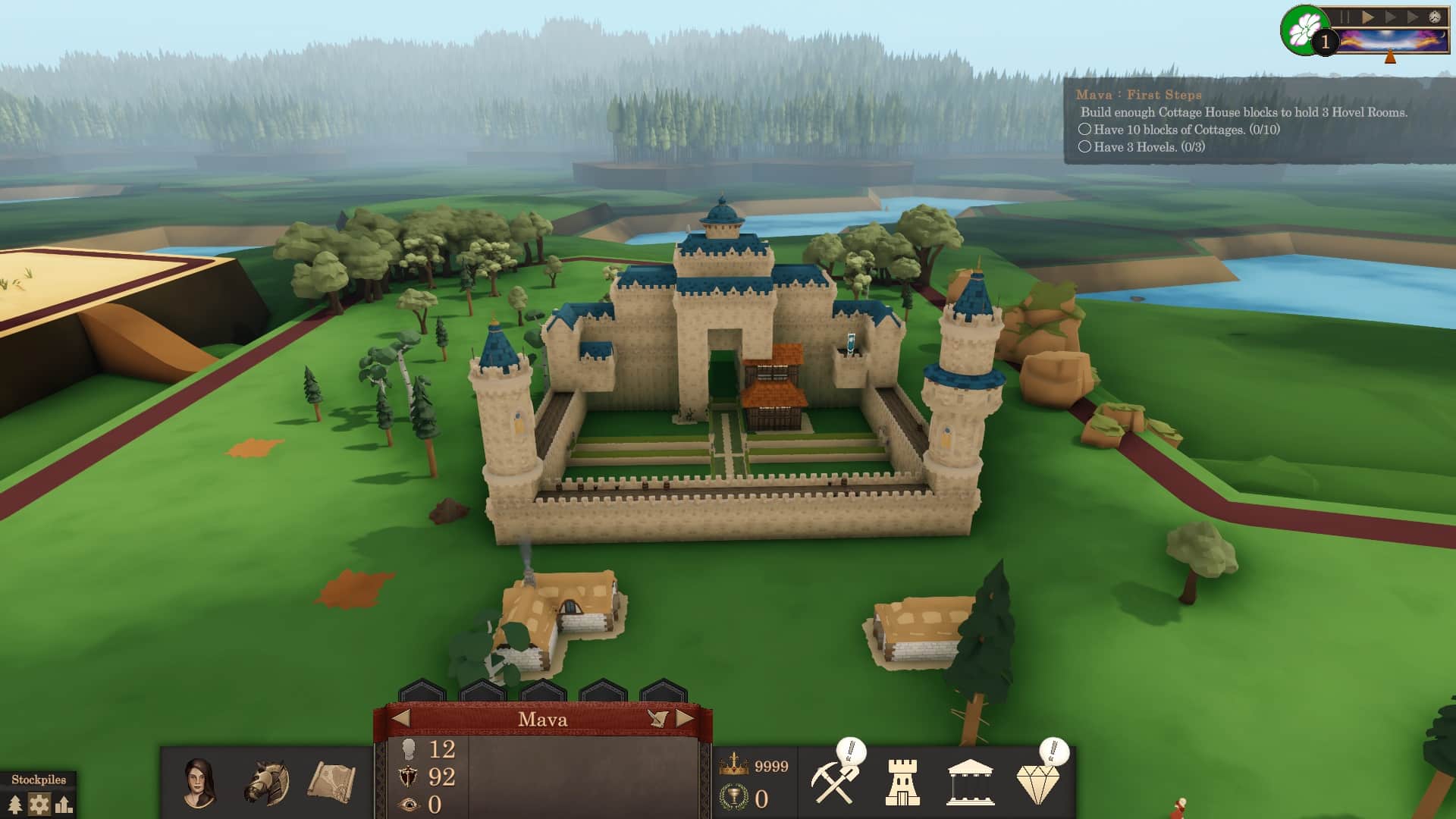
The blocks, however, are not divided into colours, but into construction methods. So you can find blocks for a small village, which then consist of wooden walls and have thatched roofs. Or you can build with blocks from the town set, which produce real half-timbered houses. Finally, there is the castle area, with which you can build massive towers out of stone and with which cathedrals or mountain wardens are also possible.
All these set pieces can be combined with each other as you wish. You can build rustic villages with small castles, or you can go completely wild and build a legendary castle that would make even Ludwig II”s royal sceptre slip out of his hand with excitement.
You don”t have to worry about atmospheric details. Depending on the constellation, small windows, courtyards, stairways, torch holders and even battle-ready ballists on city walls appear all by themselves. The only annoyance is that the entrance doors cannot be freely determined. In addition, the individual placement of blocks is not yet as dynamic as in Townscaper – which is especially noticeable with streets and walls.
However, I have only played an early version – the Early Access will probably take place at the beginning of 2023 at the earliest. So there is still a lot of time until the final release.
More than just relaxation
Of course, all this doesn”t sound too special at first. As I said, it”s the Townscaper principle, only this time with medieval castles and villages. But Spirit & Stone is more than that. Spirit & Stone tries to combine this new creative trend with old building virtues. Unlike Townscaper, this game is not just a spectacle to look at.
Instead, this building cost actually offers additional goods mechanics and inhabitant management, as we have known since Banished. In the playable version I was not dependent on resources, as it was the sandbox mode, but in the finished version there is supposed to be a kind of story campaign in addition. Here, not only do you have to raise enough resources for each block type, the constructions are built up piece by piece, just like in The Settlers.
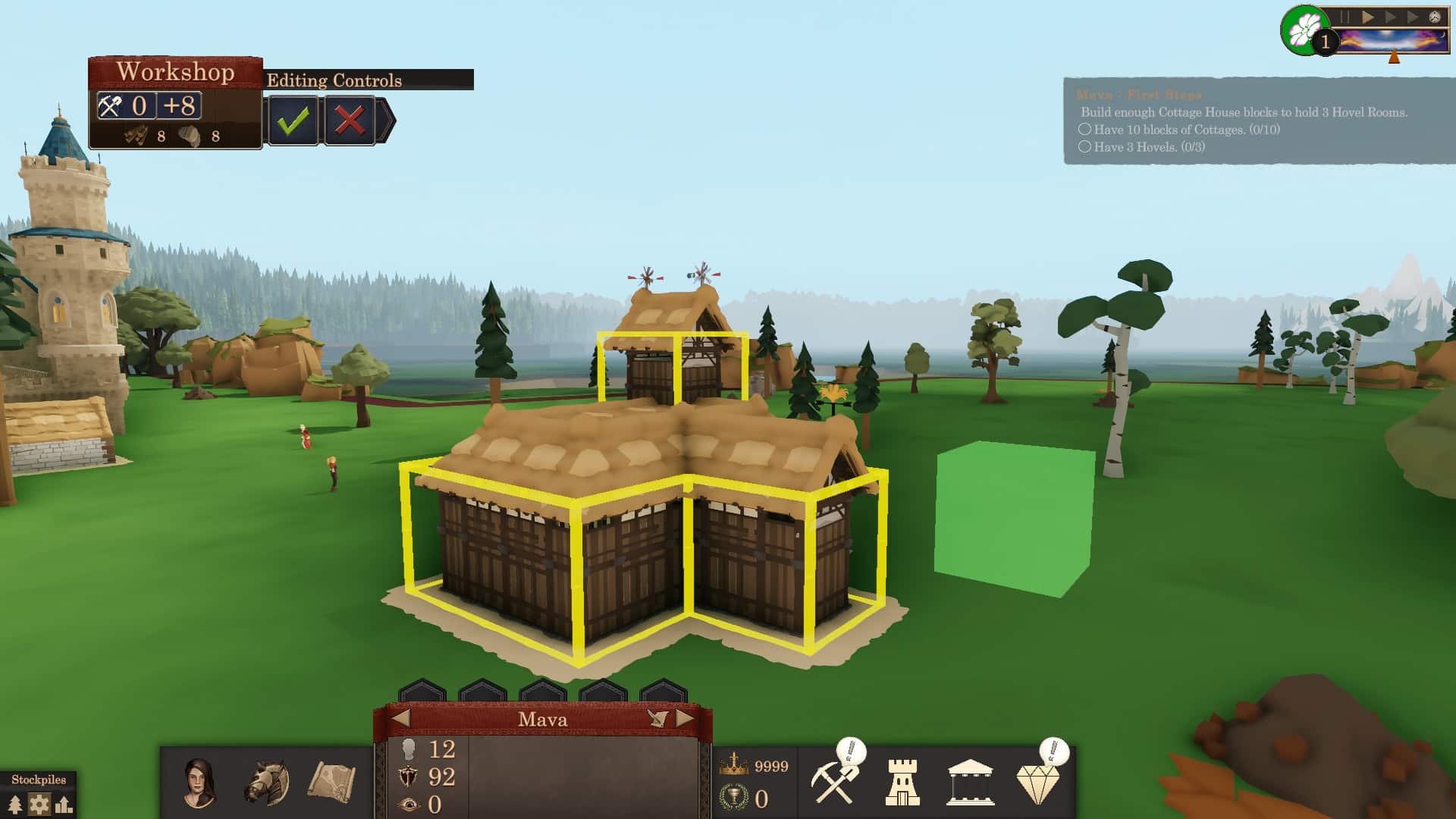
A kitchen, for example, requires only two blocks, while a building for a forge occupies a whole five of them. You can then decide whether you want to build gigantic complexes in which there is room for many rooms, or construct a different building for each room. The former makes much more sense for castles than for village communities. However, this is not mandatory.
Unfortunately, it is not yet possible to see from the outside which rooms are located in a complex. According to the developers, this will change by the time the game is released. A mill will then really be given a mill wheel.
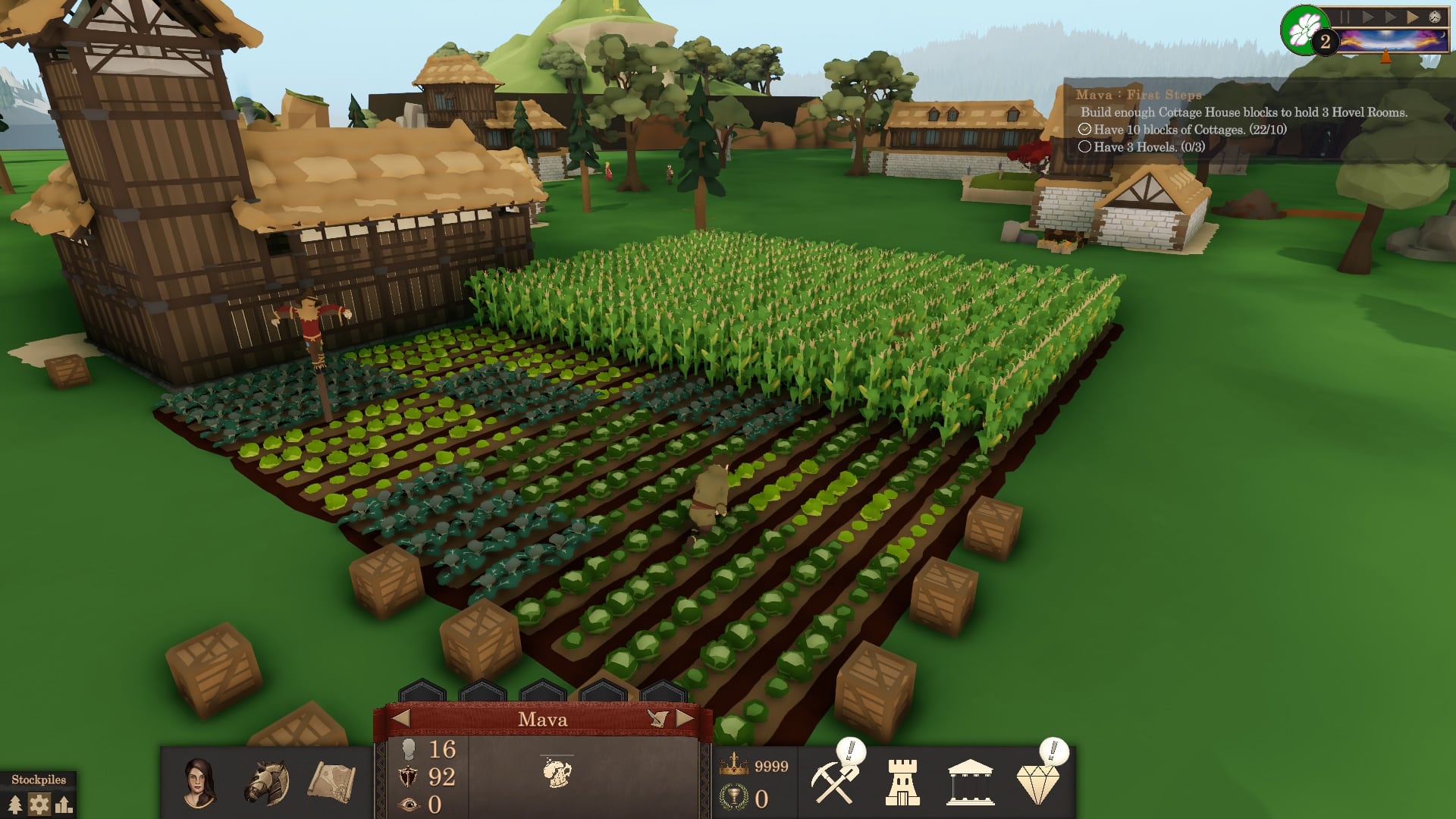
What is it about the spirits?
But that”s not all. Spirit & Stone really loads itself with a hell of a lot of mechanics. For example, buildings should still be able to receive a kind of foreman, to whom you then assign a multitude of subordinates. And each of the up to 1000 inhabitants has their own daily routine, which always consists of sleeping, eating, working and entertainment.
The surrounding countryside can even be explored, so that you can find new resources with the help of explorers. But you have to be careful here. If you overdo it with the exploitation of nature, you can very quickly fall out with the surrounding spirits.
Aha, so that”s why this game is called Spirit & Stone! The fantasy world is inhabited by ghostly beings who are in harmony with nature. It was important to the developers to have a mechanic that breathes some life into the land. Players should not approach the building game with the attitude that every part of the world can be fleeced without consequence.
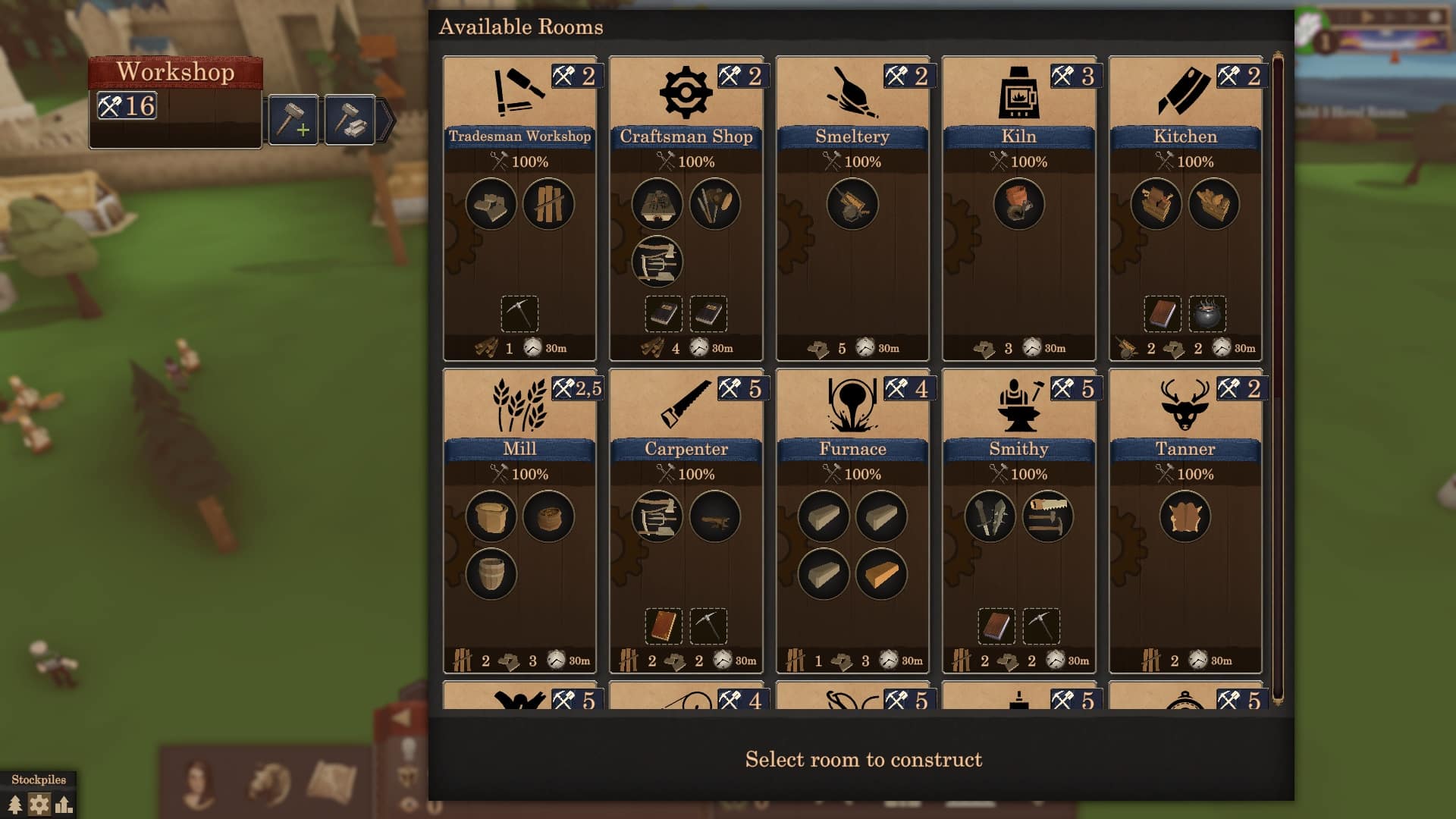
Wants a lot, but can also do a lot
As far as building and besieging is concerned, Spirit & Stone Stronghold will probably not steal the crown. But that should not obscure an important detail: This building game thinks a current building trend very consistently further. I can”t yet say whether creativity in building and managing resources as well as inhabitants will really complement each other well in the end, but hey: that”s something that building games will have to learn at some point!
Even if Spirit & Stone ends up being more quarry than fortress at the end of the day, it still shows an exciting path for the future of this genre. I think it”s important for a genre to stay alive and try new things. After all, without Banished we would never have had a masterpiece like Frostpunk. And if studios now start to think further about the achievements of a Townscaper – who knows what else will become possible.
Editorial conclusion
Spirit & Stone has already been able to entertain me for quite some time, even though it is far from finished. But I just see its potential. I”ve long wondered if the current creative trend could possibly be combined with a proper economic system at some point, and Spirit & Stone shows that it can be done. I”m not sure if it will all play as breathlessly as in many other construction games, but the possibility is there. Let”s hope that the small team doesn”t tear itself apart too much in the attempt.
Such projects need a clear focus and in Spirit & Stone that is actually building. All the other mechanics, citizen management, resource management, foremen, seasons, discovery and ghosts are really just a nice addition. The team themselves talked about how any deeper mechanics are optional and players can also focus completely on procedural building. But for the fact that they are supposed to have so little influence on a game in essence, a surprising amount of time seems to have gone into developing these features.
But I don”t want to be too critical. Spirit & Stone is on a good path, still needs a lot of optimisation of course, but above all has a very fascinating goal. If it all works out in the end, Spirit & Stone could turn into a true genre insider tip.

